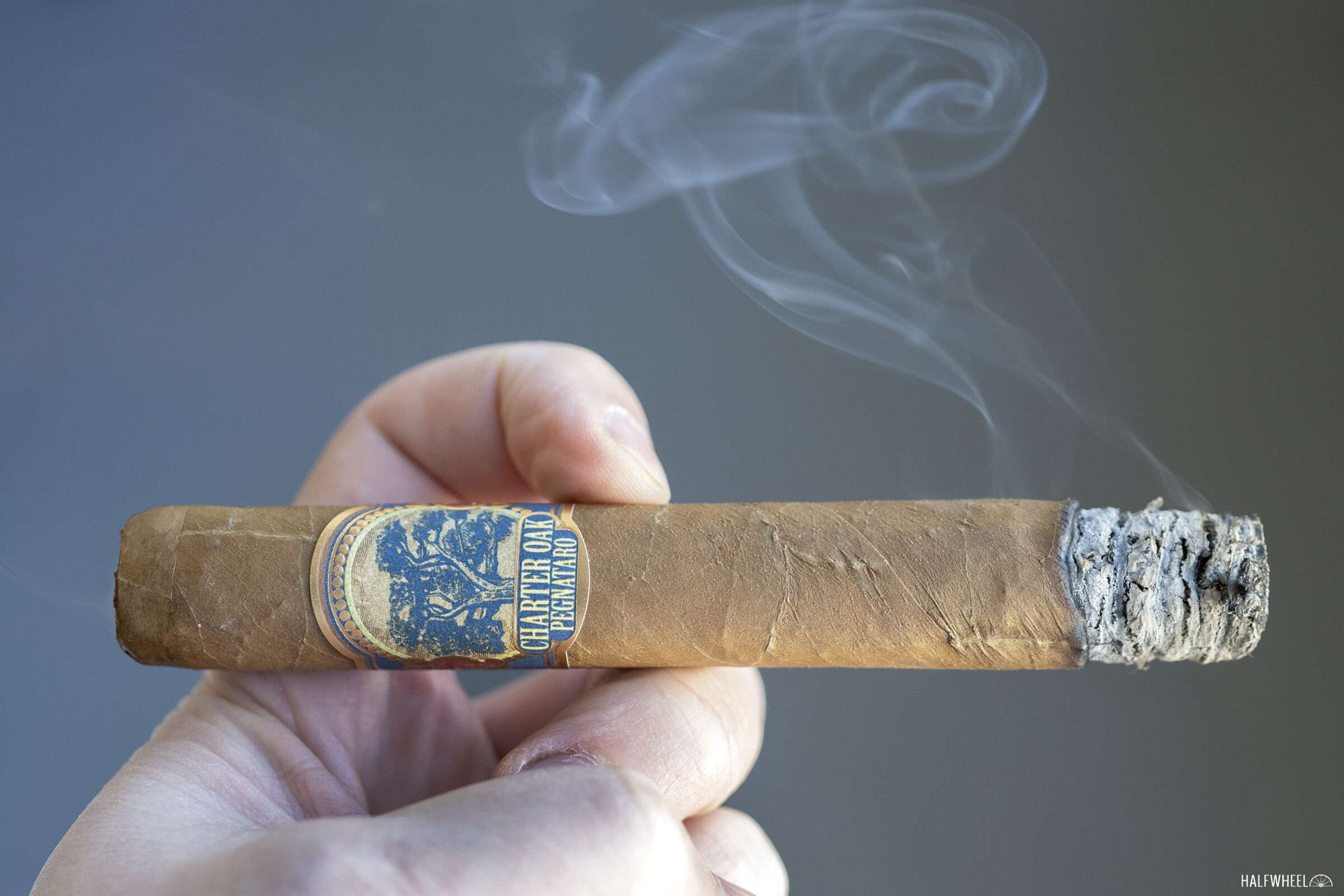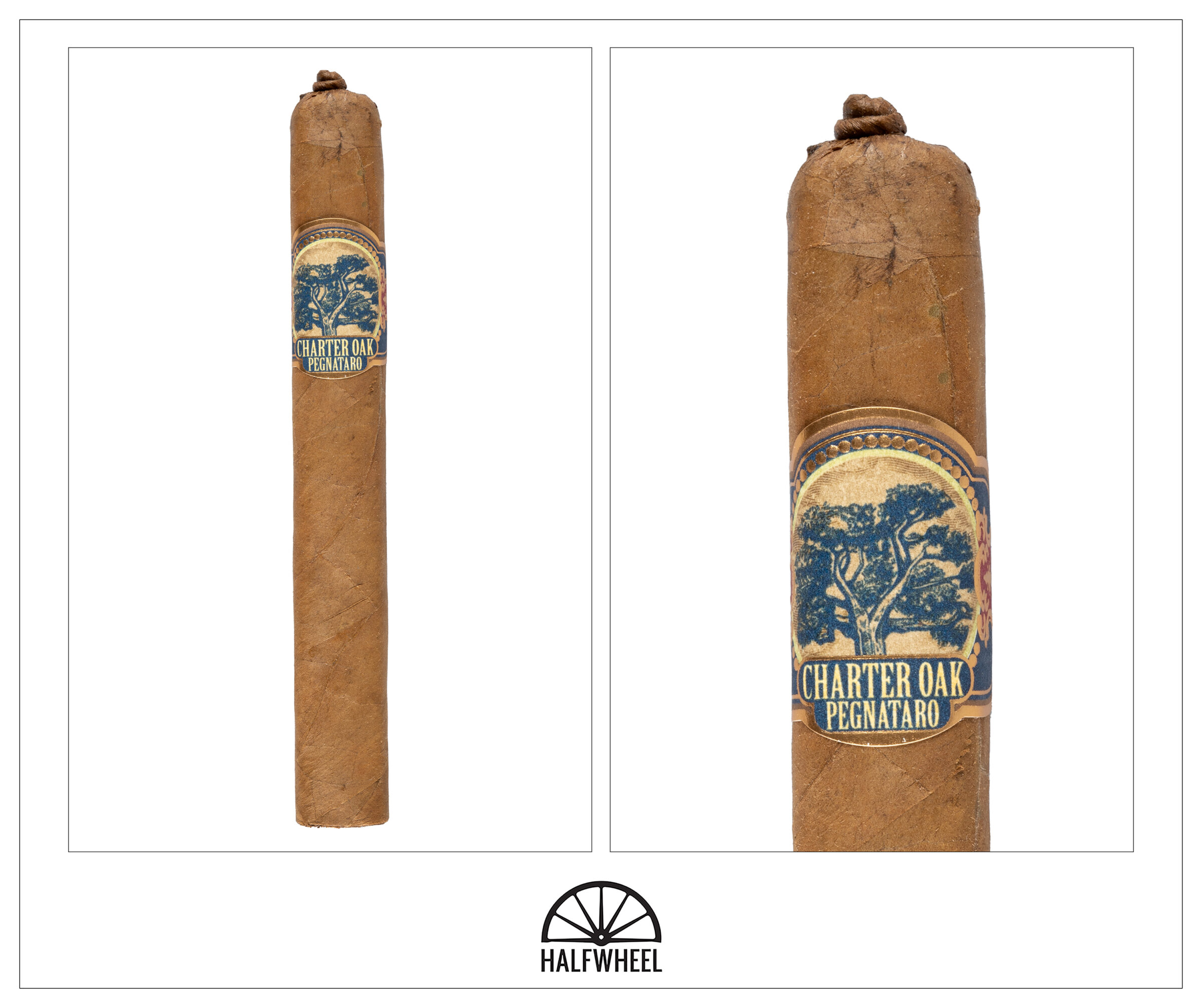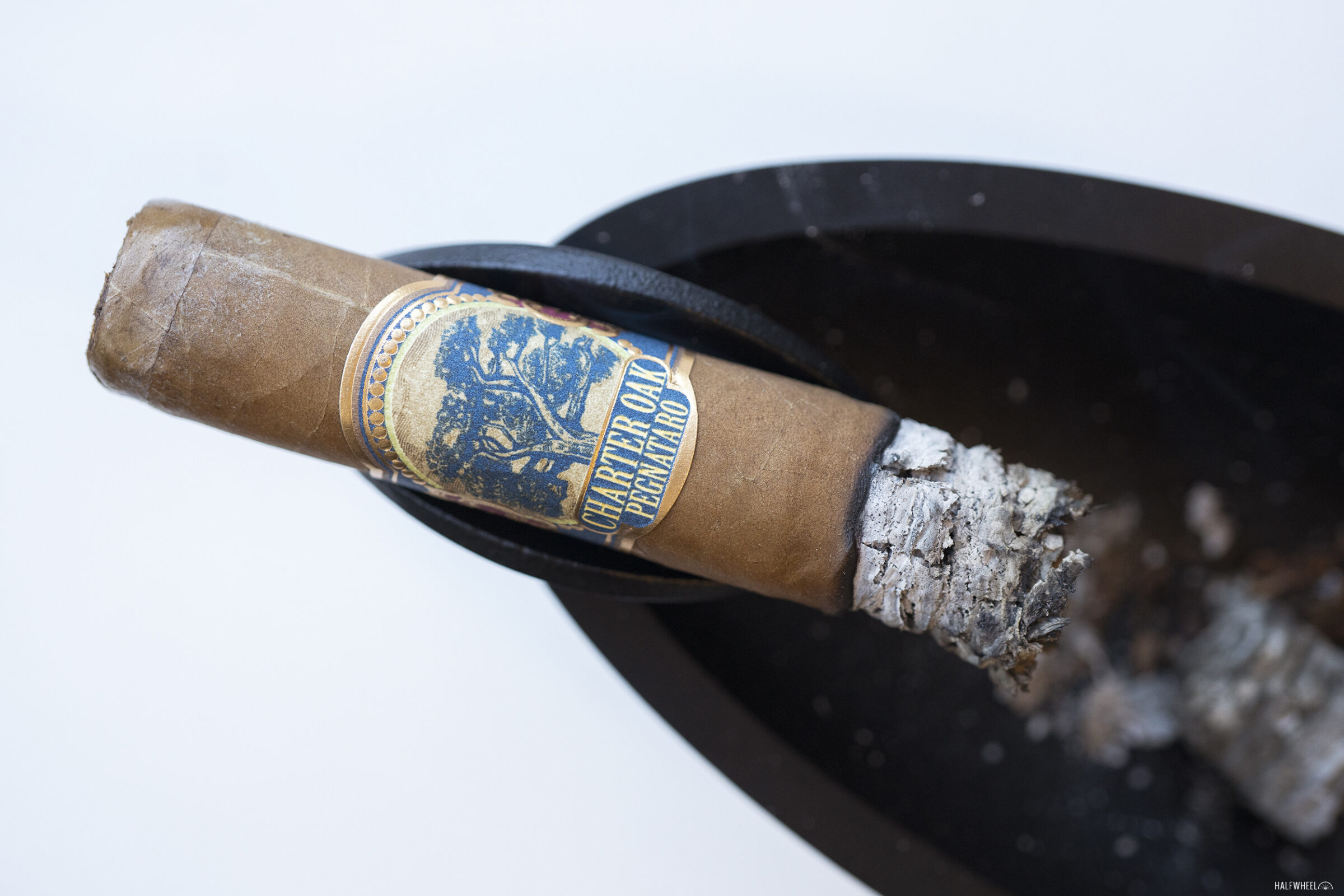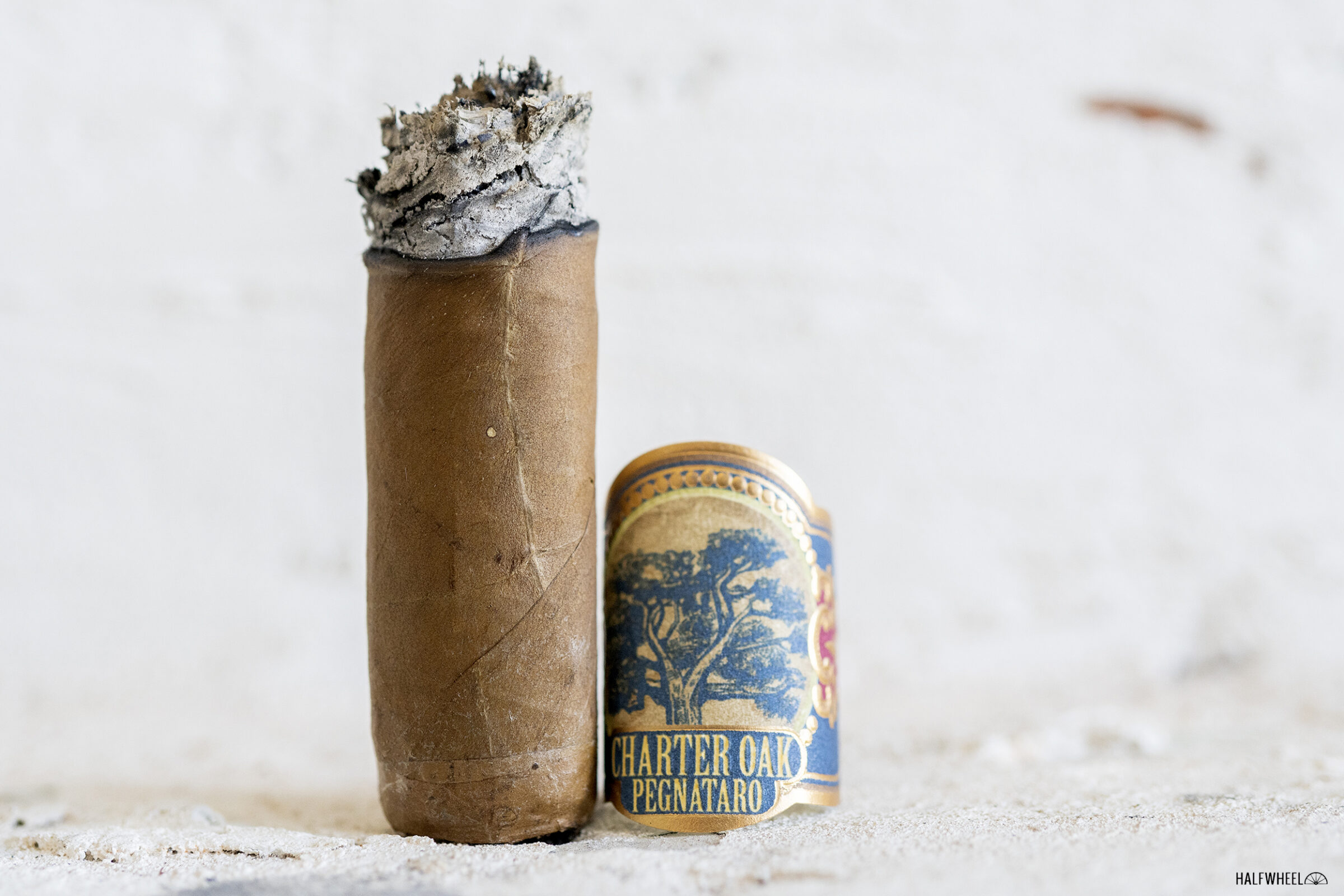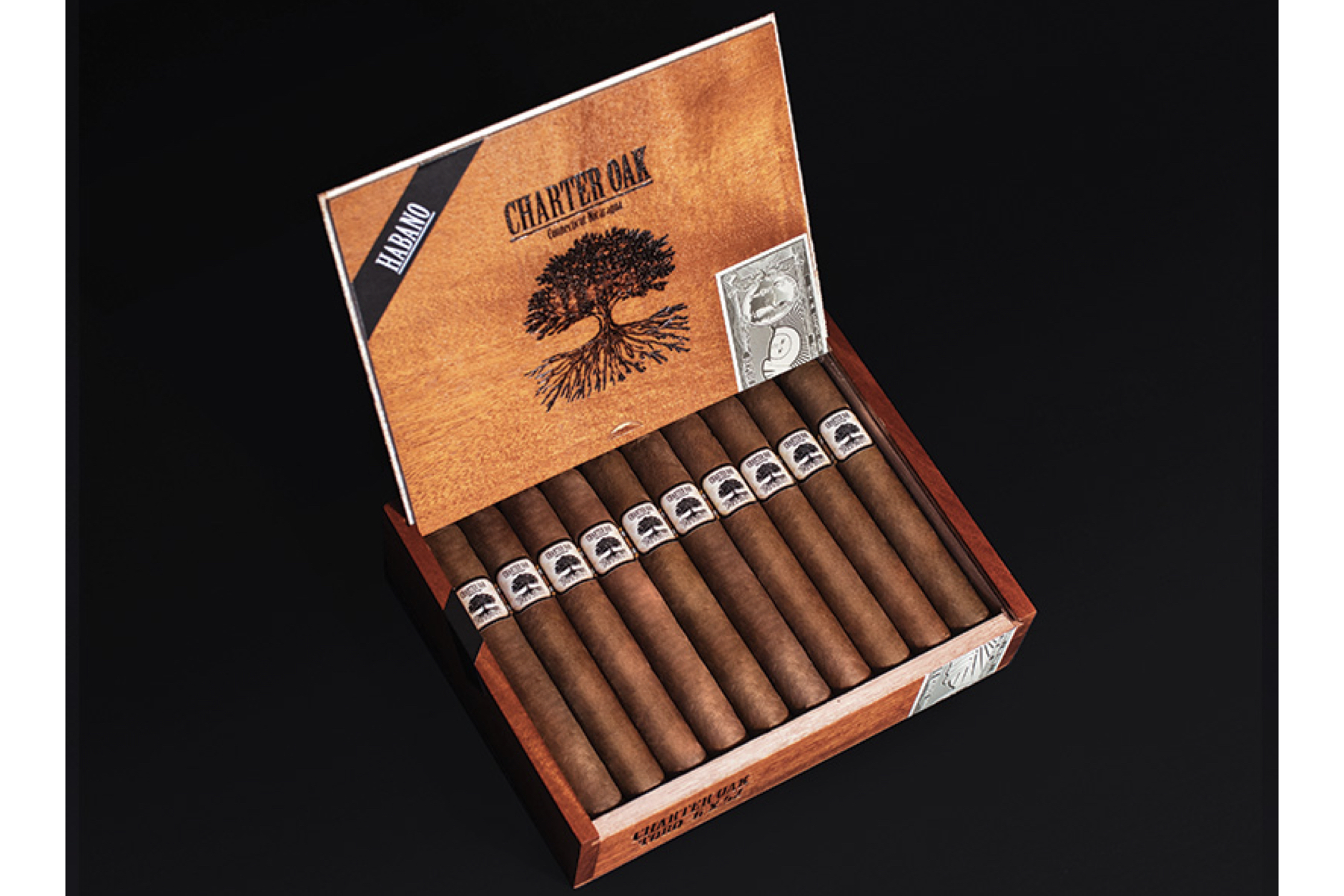Followers of Nicholas Melillo’s Instagram account should be no strangers to the sources of inspiration he finds for Foundation Cigar Co.’s cigar lines. Connecticut is featured a lot, Ethiopia and its rich history get mentioned regularly, and Nicaragua, where Melillo has spent decades of his adult life, is also a regularly occurring theme. As far as people go, his grandfathers are oftentimes mentioned, with Melillo showing pictures of him smoking cigars with either man or mentioning their military service.
As such, it should be no surprise that two of Foundation’s newest releases are named in honor of them. There are two cigars, both 5 1/8 x 42 coronas, under the Charter Oak brand, itself inspired by Connecticut. The Charter Oak Pegnataro uses a Connecticut-seed shade wrapper, while the Charter Oak Pasquale uses a broadleaf wrapper. Both cigars are made at Tabacalera AJ Fernandez Cigars de Nicaragua S.A. using Nicaraguan tobacco for the internals, though the blends are described as different from one another.
“The Charter Oak core line would have been their everyday cigar and these new blends would be for the weekend or a special occasion,” said Melillo in a press release. “These blends are deeply personal to me, as they honor the legacies of my grandfathers. The CT Broadleaf and CT Shade wrappers represent their distinct personalities, allowing me to celebrate their individuality through exceptional cigars that bear their names.”
Each cigar is a regular production item, though limited to 6,000 cigars per quarter.
- Cigar Reviewed: Charter Oak Pegnataro
- Country of Origin: Nicaragua
- Factory: Tabacalera AJ Fernandez Cigars de Nicaragua S.A.
- Wrapper: Ecuador (Connecticut-seed Shade)
- Binder: Nicaragua
- Filler: Nicaragua
- Length: 5 1/2 Inches
- Ring Gauge: 48
- Vitola: Corona
- MSRP: $13 (Box of 12, $156)
- Release Date: Oct. 25, 2023
- Number of Cigars Released: Regular Production
- Number of Cigars Smoked For Review: 3
Appearance-wise, the standout feature is at the top of the cigar. A pronounced pigtail—thicker than the more traditional Cuban example—is used for the top of each cigar. As for the medium brown wrapper, it doesn’t have many veins, but the ones that I spot are very obvious. There’s also some decent mottling throughout with minor imperfections and some stretch marks. These cigars weren’t stored in cellophane, so after nearly three and a half months in our humidor, I’m not surprised that there’s not much in the way of aroma. What aromas are present include leather over top some ammonia and sweetness. The foot is medium-full with the smell of dry Spanish cedar—I find the inside of a humidor smells a bit different depending on the moisture level—over some generic sugary sweetness. Cold draws tend to have more sweetness than average. Sometimes that’s a floral sensation, other times it’s more like a sweet graham cracker or cereal. Each cigar has a decent amount of acidity and leather, with lighter notes including creaminess, earthiness, fruits and oak. The cigars tend to be medium-full or full, two cigars have slightly loose draws.
Given how sweet the cold draws were, I’m somewhat surprised to find that not only does cedar take over the profile but also that it’s not even a sweet expression of that flavor. It’s joined by leather and creaminess, overtop some wheat bread, burnt creaminess, barnyard, leather and some oak. I generally find the starts to be medium-full, though packed full of different flavor sensations. The draws on each cigar seem looser than the cold draws, which is a bit concerning for two cigars. While the profiles are remarkably different between the cigars, it basically comes down to one variable: when does the aggressive parts of the profile start? On one cigar, the answer is the second third. That means there’s a semi-sweet profile led by cedar and creaminess with nuttiness, citrus, acidity, caramel and a restrained amount of white pepper underneath. The other two cigars both have that, but not for the full length of the first third. Instead, an aggressive mixture of woodiness, earthiness, green pepper and mineral flavors edge out the other flavors. While I don’t mind the contrasts, it’d be nice if the Charter Oak Pegnataro bounced back and forth between the two different profiles more than it does. The finish is more or less just a rearranging of whatever flavors I initially taste. On one cigar, there’s more of a dry leather, another one adds some sharp white pepper, though looking over my notes, it’s a lot of the same flavors. Retrohales are much brighter with red pepper and nuttiness leading leather, peanut butter and some dry nuttiness. They seem less affected by the aggressive parts of the profile emerging, though they are never as sweet as the flavors in the mouth. Flavor is full, or close to it, on each cigar. The body and, to a lesser degree, strength are impacted by whether the aggressive parts emerge. When they aren’t present, it’s medium-plus and medium-full, when they are, expect closer to full. Draws on two cigars are open and two cigars need help from the lighter to correct uneven burns, though one of those cigars is the one with the better draw.
Fortunately, it seems like the aggressive parts of the profile are not going to keep up their levels until the end. At different points of the second thirds, each cigar sees that aggressive tone itself down. What’s left behind is still a more aggressive and spicier profile than the first inch of the Charter Oak Pegnataro, but it’s definitely more restrained than before. I’m not sure if it’s for the better, as the toning down also takes away some of the vibrancy. In addition, it’s still pretty aggressive. White pepper and green pepper sit on top of a rich leather flavor. There’s some muted nuttiness along with earthiness and a reduced amount of creaminess. The interesting part is the finish, which has burnt flavors adding to the mixture to produce a generic potato chip sensation. There’s also leather, cedar and the aforementioned mixture of white and green pepper. Retrohales have lots of walnuts over cedar. Behind it are the green and white pepper. The finish adds some sweetness and butter, which creates a much more balanced profile. Flavor is full, body is medium-full or full, while strength is medium-full. Combustion issues—mainly uneven burns—are present on two cigars, though not the same two as the ones that had issues in the first third.
I’m going to break the fourth wall for a moment. I am a stickler for making sure the tasting notes are written in the present tense, but I think this paragraph will make a lot more sense by adding one past-tense detail. Even a half hour after I was done smoking these cigars, the lingering aftertaste was one that reminded me of what my mouth tastes like after smoking four cigars in a day, yet, the only cigar I smoked was the Charter Oak Pegnataro. I bring that up because it seems that the softening of the aggressiveness in the second third isn’t enough. The final third of each cigar tastes quite harsh, though I think that’s more due to what’s happened before this point, rather than how the tobacco tastes like during the final third. I think that the aggressive nature of the profile has probably impacted my palate in a way. I also think that the up and down nature is probably not good for the rolled up tube of dried leaves. While there’s plenty of nuttiness and earthiness to be tasted, my palate seems drawn to the acidity and harshness, which seem more lively. It’s not that it’s what I want to taste, rather, those flavor sensations seem to have a magnetic force that draws my attention there. While I appreciate the black pepper and toastiness during the finish, it’s accompanied by some added sourness, which doesn’t help my complaints about the harshness. Fortunately, if I want to get rid of the sourness, I just need to retrohale and what’s left is toastiness, leather, green pepper and black pepper. Flavor is full, body is medium-plus to medium-full and strength is medium-full. Touch-ups continue on two cigars, again to deal with uneven burns, which, given that I’m smoking indoors, isn’t something I regularly see on cigars.
Final Notes
- The first cigar I smoked, the one that had the best flavor, appeared to have a knot in the bunch right in the middle of the band. Coincidentally, it was the only one of the trio that didn’t have a slightly open draw.
- Each cigar was pretty similar in terms of the flavors and quality, the one major variable was when the aggressive part of the profile started, when it peaked and when it ended. Given that these weren’t in the same places and given how cigars are made, I wonder if the blending intent was for two thirds of a calmer cigar and then a ramping up in the final third. I can’t imagine the idea was for the cigar to get aggressive in the middle part and then soften, as it makes for a very weird final third.
- To be clear, aggressiveness isn’t just about how spicy or how much pepper or how much nicotine there is. I find a lot of AJ Fernandez-made cigars to have individual flavors that are amped up in ways I don’t regularly find. Rather than having a 5/10 amount of pepper, it ends up with an 8/10 or 9/10. And earthiness is also a 9/10. And creaminess, and so on. The end result is a cigar with 9/10 here, 9/10 here, 8/10 here, 9/10 here and I don’t find that approach to be all that enjoyable. Sure, it has tons of “flavor,” but it’s difficult to taste it because of how strong each flavor is.
- While the individual flavors can be tough to pick up during the first part of the cigar, they are allowed to shine in a way that doesn’t happen when everything is turned up.
- Cigars for this review were purchased by halfwheel.
- Final smoking time was lengthier than expected, around two hours and 15 minutes.
- Site sponsors Atlantic Cigar Co., Cigars Direct, Corona Cigar Co., Famous Smoke Shop, JR Cigar and Smoking Pipes carry the Charter Oak Pegnataro.
The Charter Oak Pegnataro has an excellent start. The first inch of each cigar was awesome. Rich flavors that were easy to identify and perhaps an even longer list of flavors that were too integrated for me to identify. Unfortunately, the amped up signature that I associate most with AJ Fernandez shows up too soon. Sometimes this works, but in this case, it didn’t. If Melillo and Fernández can find a way to delay that “turn up to 11” part of the profile until the final inch or two inches, this is a completely different cigar and one that I would probably love to smoke. Unfortunately, what’s left after the profile got turned up to 11 wasn't all that enjoyable.

